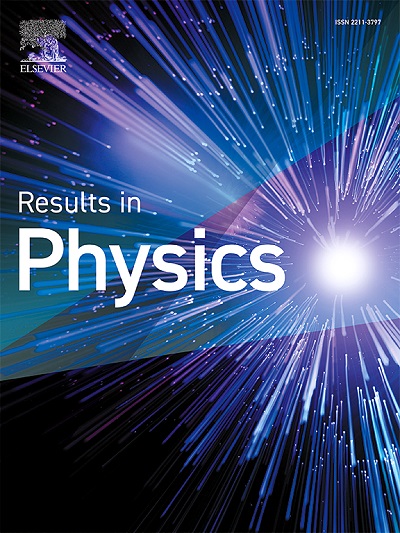Magnetohydrodynamics of nanofluid internal forced convection: A review and outlook for practical applications
IF 4.4
2区 物理与天体物理
Q2 MATERIALS SCIENCE, MULTIDISCIPLINARY
引用次数: 0
Abstract
Nanofluids (NFs) have emerged as a revolutionary medium for enhancing heat transfer, with magnetohydrodynamics (MHD) gaining particular attention for its potential to improve system efficiency. Despite this growing interest, a critical gap remains in understanding the combined impact of and its hybrid nanofluids under magnetic fields, especially in turbulent and transition flow regimes of internal forced convection. This review offers an in-depth exploration of MHD-NF internal forced convection, addressing key aspects such as magnetic field dynamics, nanoparticle clustering, stability, dispersion, flow control, and responsive rheology. Leveraging a comprehensive bibliographic analysis of 100 experimental studies from 2010 to the 2024, along with data from the Scopus® database, this work highlights how optimized nanofluid volume concentrations, magnetic field intensities, and frequencies significantly enhance heat transfer coefficients. The findings underscore that both magnetic field strength and nanoparticle concentration critically influence particle motion, flow patterns, entropy generation, thermal performance, and pressure drops, offering new insights into system design. The versatility of MHD-NF systems presents promising applications in fields ranging from advanced cooling technologies to solar thermal systems and material processing. Furthermore, this review addresses ongoing debates on the efficacy of alternating versus constant magnetic fields, advocating for customized magnetic field configurations to unlock the full potential of MHD-enhanced heat transfer. This work not only identifies existing gaps but also lays the foundation for future breakthroughs in magnetically influenced nanofluid systems.

求助全文
约1分钟内获得全文
求助全文
来源期刊

Results in Physics
MATERIALS SCIENCE, MULTIDISCIPLINARYPHYSIC-PHYSICS, MULTIDISCIPLINARY
CiteScore
8.70
自引率
9.40%
发文量
754
审稿时长
50 days
期刊介绍:
Results in Physics is an open access journal offering authors the opportunity to publish in all fundamental and interdisciplinary areas of physics, materials science, and applied physics. Papers of a theoretical, computational, and experimental nature are all welcome. Results in Physics accepts papers that are scientifically sound, technically correct and provide valuable new knowledge to the physics community. Topics such as three-dimensional flow and magnetohydrodynamics are not within the scope of Results in Physics.
Results in Physics welcomes three types of papers:
1. Full research papers
2. Microarticles: very short papers, no longer than two pages. They may consist of a single, but well-described piece of information, such as:
- Data and/or a plot plus a description
- Description of a new method or instrumentation
- Negative results
- Concept or design study
3. Letters to the Editor: Letters discussing a recent article published in Results in Physics are welcome. These are objective, constructive, or educational critiques of papers published in Results in Physics. Accepted letters will be sent to the author of the original paper for a response. Each letter and response is published together. Letters should be received within 8 weeks of the article''s publication. They should not exceed 750 words of text and 10 references.
 求助内容:
求助内容: 应助结果提醒方式:
应助结果提醒方式:


